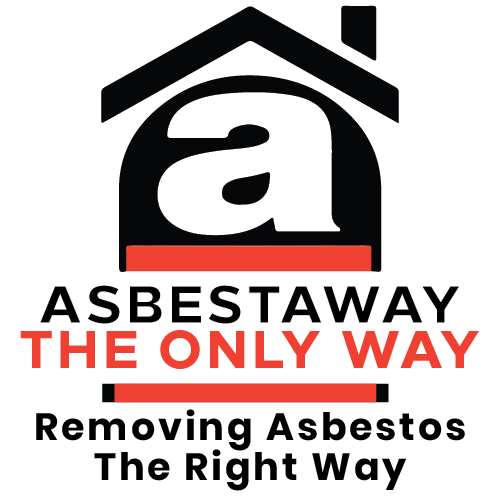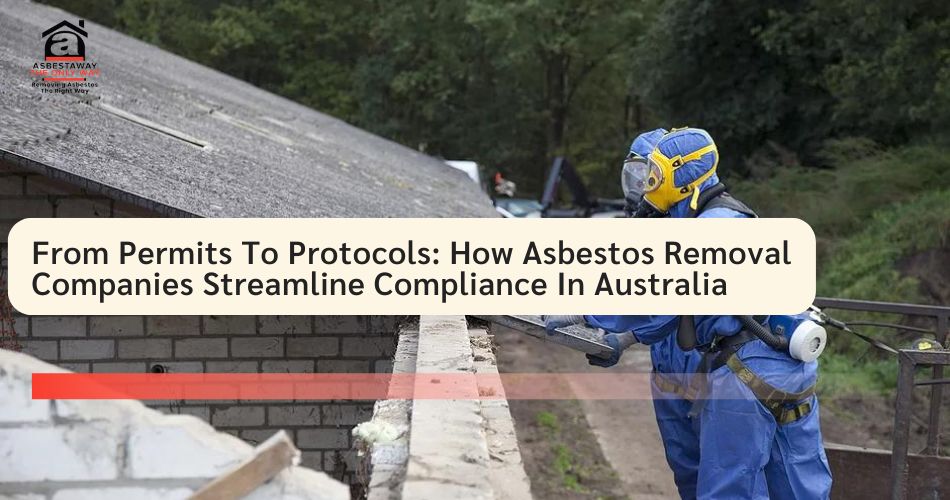Asbestos is a naturally occurring mineral that was once widely used in construction materials due to its fire resistance and insulating properties. However, it has since been identified as a serious health hazard, leading to its ban in many countries, including Australia. Asbestos-related diseases, such as mesothelioma, asbestosis, and lung cancer, have claimed the lives of thousands of Australians. Due to its hazardous nature, the process of asbestos removal is highly regulated and requires specialized training, certifications, and adherence to strict safety protocols.
This is where asbestos removal companies play a vital role in ensuring compliance with legal requirements and safeguarding the health and safety of workers and the public. In this blog, we will explore how asbestos removal companies streamline compliance in Australia, covering the process from permits to protocols. We’ll also look at the importance of professional asbestos removal services and why Asbestaway is a leading choice in the industry.
Introduction: The Importance of Compliance in Asbestos Removal
In Australia, asbestos removal is not a task that can be taken lightly. The risks associated with handling asbestos are significant, and the regulatory landscape is complex. Asbestos removal companies are required to adhere to strict guidelines set by Safe Work Australia, Work Health and Safety (WHS) regulations, and state-based authorities. These laws ensure that the process is done safely, efficiently, and with minimal risk to workers, the public, and the environment.
From obtaining the necessary permits to following specific removal protocols and conducting thorough post-removal inspections, compliance is at the core of every asbestos removal project. Whether you are a homeowner, a business owner, or a property manager, ensuring that the removal is conducted by a certified and compliant company is critical to protecting your health and property.
Body: The Process of Streamlining Compliance
Asbestos removal involves a detailed and multi-step process. Each stage of the project requires careful attention to compliance with safety standards and environmental regulations. Let’s take a closer look at the key stages in the asbestos removal process, and how companies streamline compliance in each step.
1. Initial Assessment and Risk Evaluation
The first step in any asbestos removal process is a thorough assessment of the property. Certified professionals will inspect the site to identify any asbestos-containing materials (ACMs). This assessment includes:
- Visual Inspection: The technician will visually inspect the property to identify visible signs of asbestos.
- Sampling and Testing: If asbestos is suspected, samples of the material will be collected and sent to a laboratory for testing.
- Risk Assessment: Based on the findings, a risk assessment will be conducted to determine the potential hazards posed by the identified asbestos and the necessary removal methods.
Compliance with WHS regulations requires a detailed risk assessment that takes into account the condition of the asbestos materials, the level of exposure risk, and the methods required to safely remove it.
2. Obtaining Permits and Notifications
Asbestos removal companies must obtain the appropriate permits before commencing any work. In Australia, there are strict laws governing asbestos removal, and the requirements may vary depending on the state or territory in which the work is being carried out.
- WorkSafe Notifications: Asbestos removal work must be notified to the relevant regulatory body. This notification must include details about the project, including the type of asbestos being removed, the location, and the methods to be used.
- Permits: In some jurisdictions, a specific permit is required to remove asbestos. For example, for licensed asbestos removalists to remove friable asbestos (e.g., asbestos in insulation or fireproofing), a Class A license is necessary, while non-friable asbestos removal may require a Class B license.
The process of obtaining these permits can be time-consuming and requires the submission of detailed documentation. Professional asbestos removal companies streamline this process by having a deep understanding of the local regulations and the required paperwork, ensuring that all necessary permits are obtained promptly.
3. Development of Removal Protocols
Once the permits are in place, the next step is to develop a comprehensive asbestos removal plan. This plan must be in line with the guidelines established by Safe Work Australia, which outlines the correct procedures for safe handling, removal, and disposal of asbestos.
- Work Plan: A work plan will be developed that includes the methods of removal (e.g., wetting, sealing, and containment), the protective equipment required, the decontamination procedures, and the air monitoring strategy.
- Safety Protocols: The safety protocols are critical to protecting workers and the public. This includes the use of personal protective equipment (PPE), respiratory protection, and the implementation of an asbestos exclusion zone.
- Air Monitoring: During the removal process, air monitoring is conducted to ensure that asbestos fibers are not being released into the air. This is especially important when removing friable asbestos, which is more likely to release harmful fibers.
The asbestos removal company ensures that the work plan meets all regulatory requirements and that all necessary procedures are followed throughout the project.
4. Asbestos Removal and Disposal
The actual removal of asbestos is one of the most critical stages in the process. This step must be performed with extreme caution to prevent the release of asbestos fibers into the air. Key compliance steps during the removal process include:
- Containment: The area where the asbestos is being removed must be sealed off to prevent the spread of dust and fibers. This is done using physical barriers such as plastic sheeting and negative air pressure systems to create an isolated environment.
- Wet Removal: To reduce the risk of fiber release, asbestos-containing materials are often wetted down before removal.
- Removal: The asbestos is carefully removed using specialized tools and techniques to minimize disturbance and prevent the release of fibers.
- Packaging: Once the asbestos is removed, it must be sealed in special asbestos waste bags and labeled accordingly for safe disposal.
In Australia, all asbestos waste must be disposed of at licensed disposal sites. The asbestos removal company is responsible for ensuring that the waste is transported and disposed of in compliance with local environmental laws.
5. Post-Removal Inspection and Clearance
After the asbestos has been removed, the area must be thoroughly cleaned and inspected to ensure that all traces of asbestos have been eliminated. This is a critical step in the process, as any remaining asbestos fibers could pose a significant health risk.
- Decontamination: The removal site is thoroughly cleaned to remove any dust or debris. This often involves the use of high-efficiency particulate air (HEPA) vacuums and wet cleaning methods.
- Air Clearance Testing: Independent air clearance testing is conducted to measure the concentration of asbestos fibers in the air. If the air is clear, the site is declared safe for reoccupation.
- Certification: Once the site passes the clearance test, the asbestos removal company provides a certificate of clearance, which is required for the project to be considered complete.
This final inspection and clearance step is a key part of ensuring compliance and protecting the health and safety of everyone involved.
6. Documentation and Reporting
After the job is completed, the asbestos removal company must provide the client with detailed documentation, including:
- Work Plan and Risk Assessment Reports: Copies of the initial risk assessments, work plans, and any updates made during the removal process.
- Air Monitoring Results: Results of any air monitoring conducted during the project.
- Clearance Certificate: A certificate stating that the site is asbestos-free and safe for reoccupation.
- Waste Disposal Records: Documentation proving that the asbestos waste was disposed of at a licensed facility.
These records serve as proof of compliance with all relevant regulations and are essential for any future property transactions or legal matters.
Why Choose Asbestaway?
Choosing the right asbestos removal company is crucial to ensuring that your asbestos removal project is carried out safely and in compliance with Australian regulations. Asbestaway is a leading asbestos removal company that excels in streamlining the compliance process, making them an excellent choice for homeowners, businesses, and property managers.
1. Certified and Licensed Professionals
Asbestaway employs only fully certified and licensed asbestos removal professionals, ensuring that all work is carried out in strict adherence to regulatory guidelines. With their expertise in asbestos removal, they minimize the risks associated with asbestos exposure.
2. End-to-End Service
From the initial assessment to the final clearance, Asbestaway provides an end-to-end service that takes care of all aspects of the asbestos removal process. They handle permits, risk assessments, removal, disposal, and documentation, allowing you to focus on other aspects of your project.
3. Safety First
Asbestaway places a strong emphasis on safety, using the latest equipment and best practices to protect their workers and the public. They also conduct rigorous air monitoring to ensure that the work site is safe once the project is completed.
4. Comprehensive Documentation
Asbestaway ensures that all necessary documentation is provided to clients, including detailed work plans, air monitoring results, and clearance certificates. This transparency ensures that clients have a clear record of the work completed and can demonstrate compliance if needed.
5. Eco-Friendly Disposal
Asbestaway is committed to environmentally responsible asbestos disposal. They ensure that all asbestos waste is disposed of at licensed and approved facilities, minimizing the environmental impact.
Conclusion
Asbestos removal is a critical process that requires careful planning, precise execution, and strict adherence to safety and regulatory standards. In Australia, where the risks associated with asbestos are well-known, it’s essential that removal companies follow every step of the compliance process to ensure that both workers and the public are protected.
From obtaining the necessary permits and developing detailed removal protocols to conducting air clearance testing and ensuring proper disposal, compliance is at the heart of the asbestos removal process. Choosing a reliable, licensed, and experienced asbestos removal company like Asbestaway ensures that the process is carried out safely, efficiently, and in full compliance with Australian.

